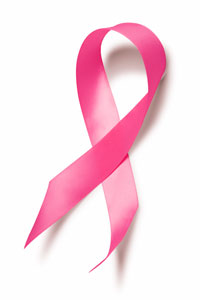
FEATURE – If you are like many women who still believe they must get an annual mammogram, who count on regular self-examinations or who believe their risk of breast cancer is low because nobody in their family has had it, this article is for you because the science has changed.
The purpose of the following nine points is not to discourage you from getting mammograms but rather to help you separate fact from fiction and make sensible decisions.
No one agrees on when you should start or stop having mammograms or how often you should have them – yearly, every other year or some other set frequency.
There is no evidence that one scheme is better than another. Most researchers, however, agree that mammograms before age 50 and after age 70 are likely the least cost-effective.
The decision to get a mammogram should be an informed one, not a knee-jerk reaction to the calendar.
Mammograms miss about 1/3 of early cancers.
If we are going to significantly reduce mortality from breast cancer, we are likely going to need to use a whole new approach for diagnosis and treatment (gene- and immunity-therapies are two examples). Mammography simply is not having the impact on reduction of breast cancer mortality that it needs to.
It is interesting to point out, though, that missing these early cancers does nothing to worsen outcome. It seems like it would, but it doesn’t.
Eighty percent of women who get breast cancer have no family history of it.
That’s right, and your risk for breast cancer increases as you age until the day you die. There is no “peak” age. But there also is no data showing survival benefits from screening over the age of 75.
Many of the cancers found on mammograms are not life-threatening (seen retrospectively).
They are very slow growing tumors. So getting diagnosed with breast cancer is not a death sentence. It’s scary, but it is not universally fatal. Have hope.
Over-diagnosis is a significant problem with modern mammograms.
It is estimated that 1/3 of women who get mammograms will at some point have a call back requiring further testing and often biopsies or other invasive procedures; not to mention the worry that comes with those.
Aggressive call-backs have done little to change breast cancer mortality in the last 25 years.
There is a consensus among researchers worldwide that mammograms do little to affect breast cancer mortality rates.
Compare this to cervical or colon cancer screenings, which are documented to decrease cancer mortality rates by up to 75 percent.
In a national poll, women said they believe mammograms would prevent around 50 percent of breast cancer deaths. Studies show it is much less than that, preventing 1 to 2 cancer deaths per 1,000 women screened.
Clinical exams and self-exams have not been shown to reduce breast cancer mortality.
Unfortunately.
If you are a younger woman with a breast lump, ultrasound is usually the next step you should take, not mammography.
Most lumps are cystic – that is, fluid-filled – and can be safely watched.
There is a lot of confusing, contradictory and incorrect information on the Internet about breast cancer prevention from sources that sound legitimate.
Some of these information pages are outdated. Some are perpetuated by physicians themselves. Some are written by people who do not follow medical literature.
• • •

I want to stress that breast cancer research needs funding now more than ever because mammograms just simply are not getting us where we need to be.
But campaigning for a mammogram for every woman is not an effective way to reduce mortality from breast cancer.
We need something new, and better, to more effectively diagnose and treat this terrible disease. The experts know this. Major media outlets know this.
I just think that the consumer/patient needs to know it too and maybe a little impatience with the status quo will help thing change more quickly. It needs to.
Resources
- Dr. Sean Lynn practices at St. George Women’s Health Center, St. George | Telephone: 435-218-7770.
Email: [email protected]
Twitter: @STGnews
Copyright St. George News, SaintGeorgeUtah.com LLC, 2018, all rights reserved.